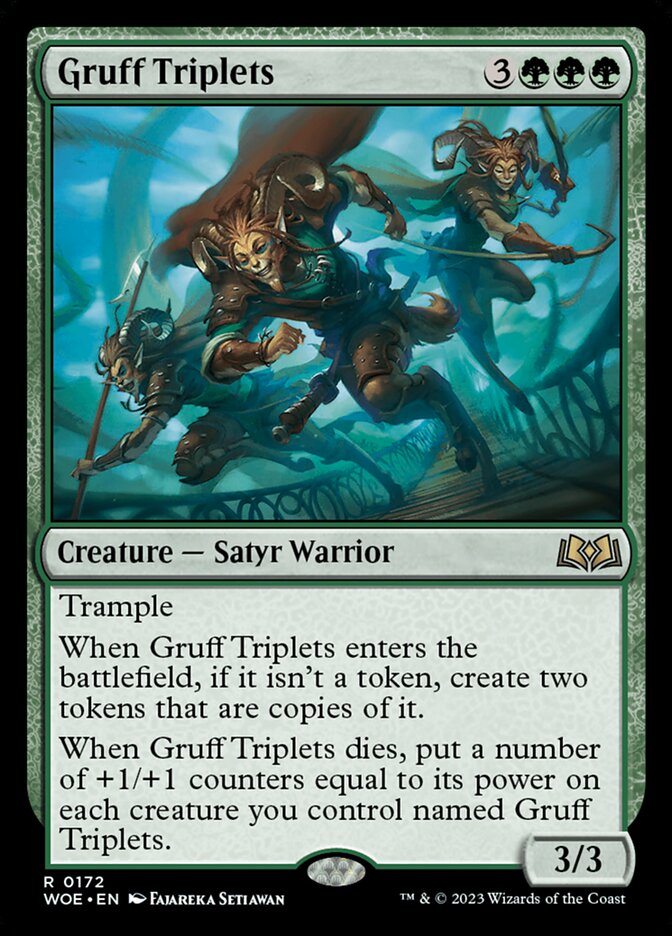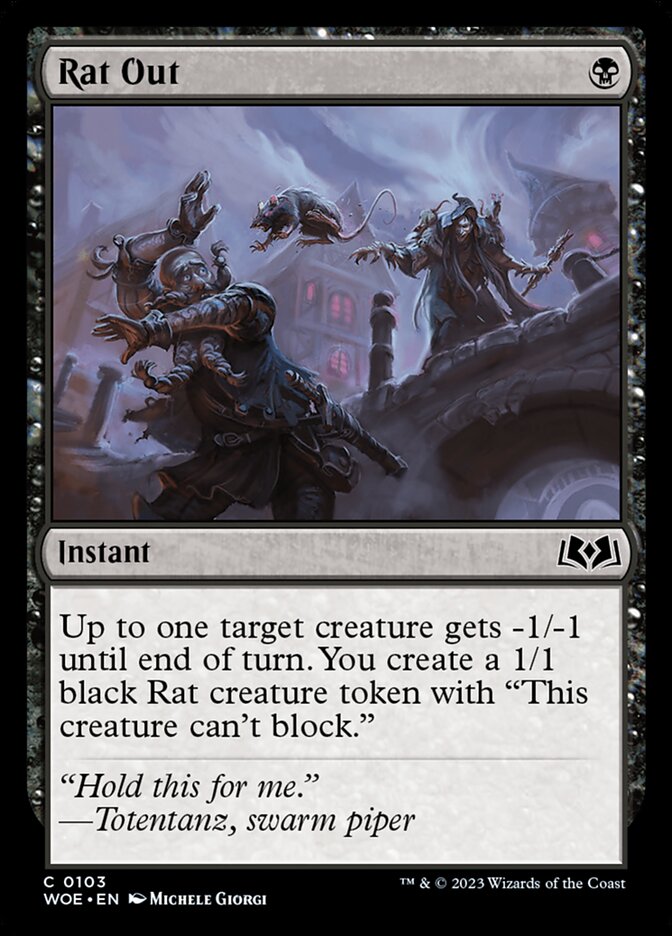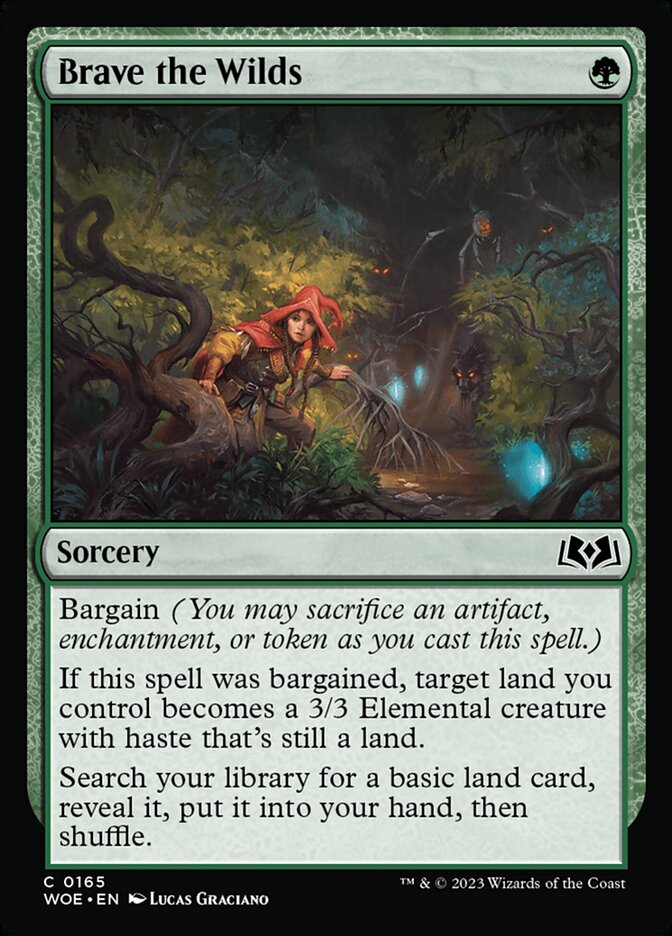10 Tips For Mastering Wilds of Eldraine Limited
Introduction
After participating in several (many) Wilds of Eldraine draft and sealed events, I decided to craft a unique article, based on tips from my personal experiences with the format.
I'm not necessarily saying these are undisputed facts, but rather situations I've encountered and felt it wise to share with you all. I'll be providing five tips, derived from both positive experiences and five potential pitfalls, born from experiences that initially seemed promising, but proved unfavorable.
5 Tips for Success
Tip #1. Splashing in Sealed vs. Draft.
Eldraine Wilds is renowned for being a set that offers ample opportunities for splash, chock full of treasures, mana fixers, and rare dual lands. However, aggressive two-color archetypes can be highly rewarding, especially if you maintain a low curve, incorporate combat tricks, and utilize a certain number of removals. Take, for instance, this draft where I breezed through with a 3-0 victory:

The deck has some cards that might generally be seen as weak, such as Gnawing Crescendo, Rat Out, and Bellowing Bruiser. However, given the deck's aggressive theme, focusing on generating lots of rat tokens, they make sense.
So when you're building your deck, consider your strategy:
- Do you want to play aggressively?
- Do you want to control the early game and win with late-game bombs?
- Do you want to trade creatures early on due to a lack of removal?
This deck, for instance, has a solid number of removals, and with the combo of Barrow Naughty + Conceited Witch, it's a great curve for aggressive decks, because you have evasion in a creature that dodges some of the most common removals in the format.
Could these weaker cards be replaced with better cards from other colors?
Yes, but we would likely run into mana base issues, as we have almost no potential to splash without buying the necessary land. Evaluate your strategy, starting with your initial picks, and execute it to the best of your ability.
Tip #2. If You Can, Avoid Blue
Blue is undeniably the worst color in the format; there are few reasons to play it other than to splash for a bomb like The Mother Goose, or due to a lack of options in other colors in a sealed event. Personally, nearly all my attempts at playing blue have ended in disappointment. The only successful experience I had was a 6-0 run I made in last month's Magic Arena Qualifier.

But it's worth mentioning that this was a sealed deck, where I had to devise a strategy with the best possible cards I could have. And the blue wasn't that great, despite having 2 Frockling Familiars and a Horned Lock-Whale, which are indeed some really good blue cards. With that in mind, let’s move on to the next tip.
Tip #3: Optimizing Your Pool: What is the Best That You Have?
As I mentioned, even though it wasn't my top color choice, given what I had available in my pool compared to the other colors, I decided to pair red with blue for this play-in. This is exactly what you should do when playing sealed: analyze your pool and try to play with the best cards.
A tip I picked up from player DarkestMage (who, by the way, is an excellent player. If you like sealed/draft as much as I do, I recommend checking out his content to improve your skills in the format) is, using Magic Online as an example, to separate the best cards by color and from there, analyze the best strategy, whether we have the possibility of splashing, etc.
I'll use my last Limited Challenge, in which I was the champion, as an example.

In my card pool, I had Evolving Wilds, Brave the Wilds, Rootrider Faun, and Prophetic Prism. Therefore, I would likely have no issues splashing a third or even fourth color. I also had two copies of Imodane's Recruiter, which I needed to include no matter what, because it's a mythic that heavily rewards you for having it in your deck, often winning games out of the blue. I had a strong base in Black and Green, with large creatures that generate value and a good number of removals. Fitting in the off-color cards wasn't too difficult, as I analyzed well what I had and managed to arrive at this conclusion. Yenna generated an insane value with the enchantments, especially Copped Up and Up the Beanstalk, and Heartfire Duelist, being a decent two-drop and a recursive and tutorable removal. There were games where I didn't even need these cards to win, the BG base of large creatures and pinpoint removals were enough, but if I had the chance to make my deck even better, why not do so? That's what you should do in your upcoming sealed pools: try to extract the maximum from it and play with the best cards you have, if your cards allow it.
Tip #4. Balancing Greed in Deck Building
Using the Challenge deck as an example, one could say I got a bit greedy trying to add two colors to a BG that already had a good base of cards.
Now, let's take the Saturday Super Qualifier deck as another example:

Let's say I tried to be even more ambitious, adding two (even three colors) to my deck and the results weren't too impressive. In my perspective, I even had more opportunities to splash on Saturday than on Sunday, given that I had 2 Evolving Wilds, 1 Crystal Grotto, 2 dual/man-lands, not to mention Brave the Wilds and cards that generated treasure. But even so, it was a lesser deck, so perhaps with additional multi-colored cards, I could have performed better. This also involves critically analyzing what you have at your disposal, something I may not have done too well. My greed punished me on Saturday, but rewarded me on Sunday and that leads us to the final tip.
Tip #5. Understanding Variance
To wrap up the tips, this is a piece of advice that is not only applicable to this edition's limited format but also to the game at large. From my perspective, the deck I played on Saturday wasn't quite up to par, though it still had its merits. Unfortunately, things didn't pan out too well, with some major hits like the Gruff Triplets practically winning games single-handedly. This is part of the package in Magic, particularly on Magic Online, where you'll find top-notch players who will undoubtedly pull out all the stops to beat you - that's the nature of competitive gaming.
I also encountered some mana issues, which is commonplace and part of the game's dynamics. Sometimes, it's just not your day. But as I've noted, on the other side of the table there might be an opponent who is just as skilled as you are, and you might have the misfortune of flooding or fizzling out, losing a game as a result. While it can be hard to accept such outcomes, they're part of the process of growth as a player and as a person.
5 Common Pitfalls to Avoid
Pitfall #1: Be vigilant with sealed cards that may seem good in draft.
I believe a textbook example of this format is Rat Out. It's a decent removal for draft (which technically can be a faster format), but it doesn't do much against cards with higher power levels which can be found in sealed. A quote I picked up from DarkestMage during one of his streams went something like this:
If your deck is subpar, Rat Out might be seen as an alright or even good card. However, if your deck is top-notch, Rat Out would likely be viewed as a mediocre or poor card
This nicely encapsulates what I'm trying to convey with this trap. Rat Out at first glance seems like a solid card when you can take out a Monstrosity or Armory Mice on turn 2. But how often are we going to encounter these cards in a sealed deck where we're likely to find cards with a higher power level, or even low-cost cards with more than 1 toughness? It seems unlikely, but yes, it could be a viable card against decks that aim to be faster even in sealed play.
Generally, I would favor cards with a higher power level in a sealed deck and keep Rat Out in the sideboard. When it comes to draft, the format is faster with a greater likelihood of encountering creatures where you could make better use of this type of removal card.
Pitfall #2: Different Formats, Different Paces
Generally, Draft is designed to be a faster format while Sealed is slower. This is due to the opportunities certain cards present, allowing you to splash into one or more colors and utilize the best cards from your pool. In Draft, you usually follow a certain strategy right from the initial picks. Certain themes like Celebration and Rat tokens allow us to be more aggressive and curved, not necessarily needing to use many colors to achieve this. Of course, this is a principle that can shift depending on each player's style, but I've noticed that drafting quick and curved decks can be highly beneficial, especially since some plays are incredibly powerful when you're on the play. Removals are also very effective, but as you place threats on the board, it forces your opponent to respond to each one, and some even offer more than a one-for-one trade, as in the cases of the abilities mentioned earlier.
Pitfall #3: Typically, 17 Tends to be Superior To 16 Lands
Yes, I know my last Limited Challenge deck used 16 lands. That was a risk I decided to take, considering I also had Brave the Wilds and low-cost cards that dig into the deck like Up the Beanstalk and Prophetic Prism.
I think if I didn't have one of those 3 cards, I would possibly play with 17 lands, because my pool practically demanded that I couldn't afford to miss land drops, as the best plays were of a higher curve.
This is something you should also keep in mind:
- Is it worth it for me to use 16 or 17 lands?
- Do I have a lot of high-cost cards?
And also:
Do I have enough removals to prevent me from being overrun in the early turns?
Even though it's sealed, some archetypes can be more aggressive, depending on the quality of the opponent's pool.
On further analysis of my pool, even with the 3 aforementioned cards, it may have been an unnecessary risk, because I needed to at least make my first 3 land drops frequently and with 17 lands, this can be better utilized.
Pitfall #4: Understand how to balance your mana curve effectively.
Just because you can have a higher curve in Sealed doesn't mean you should overlook the potential of encountering faster decks, even in slower formats. Packing your deck with 4+ cost bombs and increasing the number of lands can be a pitfall, as the format isn't as slow as it seems. Yes, it's important to have good cards to improve the quality of your deck, but depending on what you're up against, using some weaker cards with a lower curve could be the deciding factor in victory or defeat against slower decks that aim to beat you as quickly as possible.
Pitfall #5: WOE is Different From LoTR
LoTR was a set where non-Bx decks struggled to compete, given the high power level of the black color compared to others. Wilds of Eldraine is a much more balanced set, where apart from blue, which is generally the weakest, the other colors have great potential to form solid decks, with balanced cards, removals in nearly all colors, and game-winning bombs.
I admit that in the beginning, it was somewhat challenging to move away from the black color, due to the number of drafts that I played in LoTR and, whether I liked it or not, this inevitably influenced my gameplay. Understanding that each format has its own peculiarities is also part of evolving as a player.
Final words
Wilds of Eldraine Limited offers you multiple possibilities, but it's crucial to distinguish the speeds and best strategies for each deck. Splashing with better cards is more advisable in sealed, while in draft, quick and curved decks can reward you depending on the speed of your opponents' decks. I hope these tips help you better understand this format that I find so enjoyable and has already become one of my recent favorites.
Until next time!




